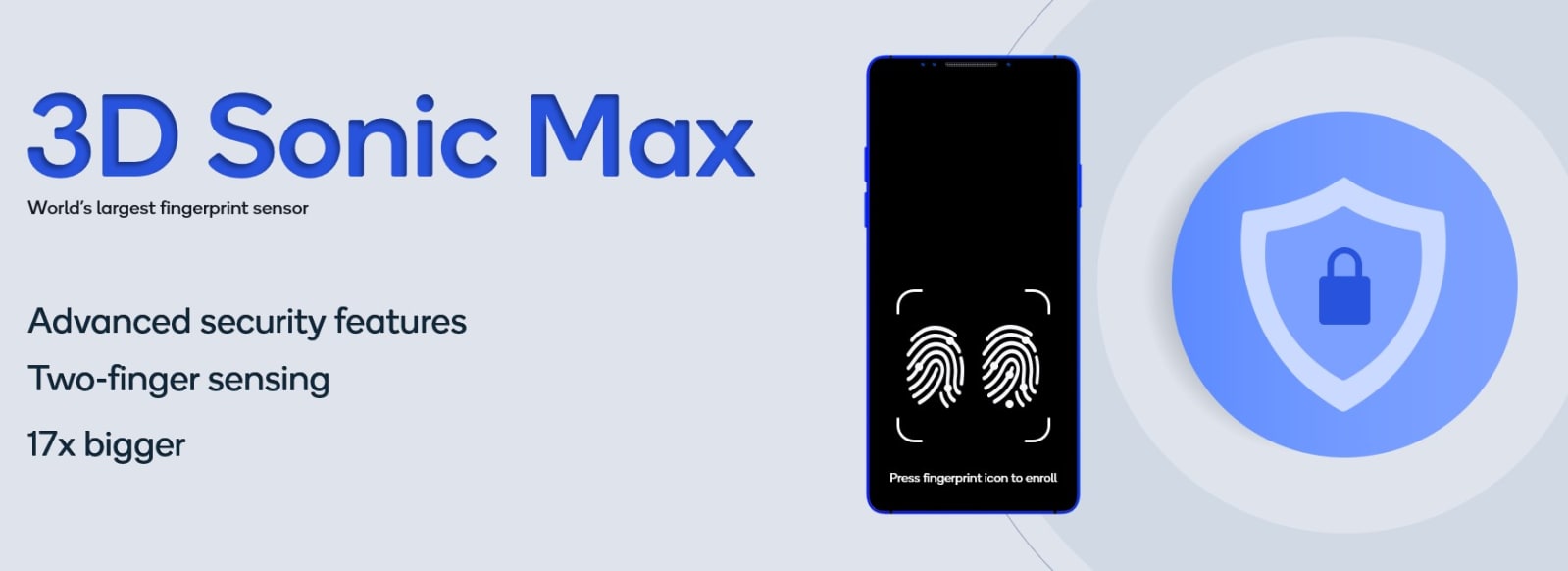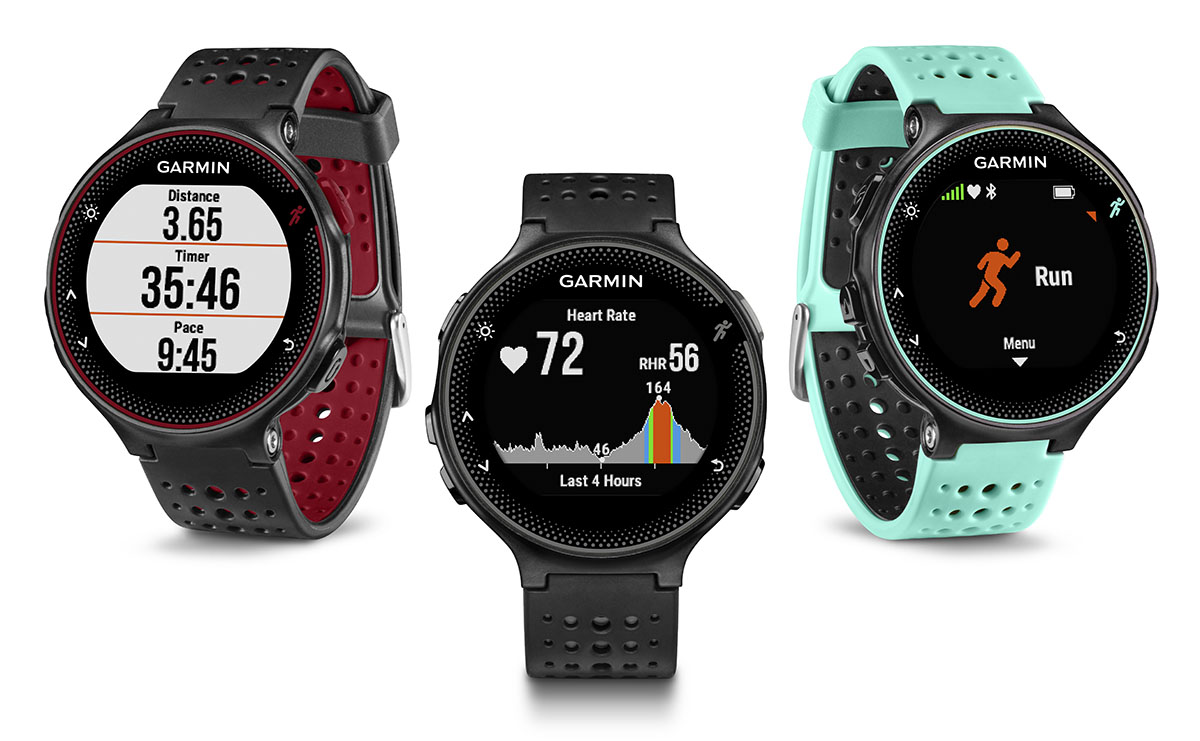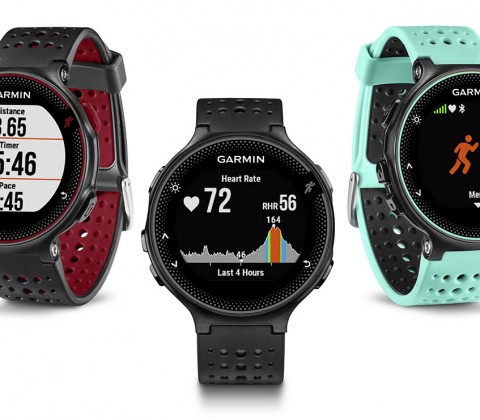Posts Tagged: sensor
Apple Watch Series 8 temperature sensor: what it does and how to use it
The Apple Watch Series 8 and Apple Watch Ultra feature a new temperature sensor. Here’s how it works and what you can use it for.
Mobile | Digital Trends
NYU is building an ultrasonic flood sensor network in New York’s Gowanus neighborhood
People made some 760 million trips aboard New York’s subway system last year. Granted, that’s down from around 1.7 trillion trips, pre-pandemic, but still far outpaced the next two largest transit systems — DC’s Metro and the Chicago Transit Authority — combined. So when major storms, like last year’s remnants of Hurricane Ida, nor'easters, heavy downpours or swelling tides swamp New York’s low lying coastal areas and infrastructure, it’s a big deal.
And it’s a deal that’s only getting bigger thanks to climate change. Sea levels around the city have already risen a foot in the last century with another 8- to 30-inch increase expected by mid century, and up to 75 additional inches by 2100, according to the New York City Panel on Climate Change. To help city planners, emergency responders and everyday citizens alike better prepare for 100-year storms that are increasingly happening every couple, researchers from NYU’s Urban Flooding Group have developed a street-level sensor system that can track rising street tides in real time.
The city of New York is set atop a series of low lying islands and has been subject to the furies of mid-Atlantic hurricanes throughout its history. In 1821, a hurricane reportedly hit directly over the city, flooding streets and wharves with 13-foot swells rising over the course of just one hour; a subsequent Cat I storm in 1893 then scoured all signs of civilization from Hog Island, and a Cat III passed over Long Island, killing 200 and causing major flooding. Things did not improve with the advent of a storm naming convention. Carol in 1954 also caused citywide floods, Donna in ‘60 brought an 11-foot storm surge with her, and Ida in 2021 saw an unprecedented amount of rainfall and subsequent flooding in the region, killing more than 100 people and causing nearly a billion dollars in damages.
As the NYC Planning Department explains, when it comes to setting building codes, zoning and planning, the city works off of FEMA’s Preliminary Flood Insurance Rate Maps (PFIRMs) to calculate an area’s flood risk. PFIRMs cover the areas where, “flood waters are expected to rise during a flood event that has a 1 percent annual chance of occurring,” sometimes called the 100-year floodplain. As of 2016, some 52 million square feet of NYC coastline falls within that categorization, impacting 400,000 residents — more than than the entire populations of Cleveland, Tampa, or St. Louis. By 2050, that area of effect is expected to double and the probability of 100-year floods occuring could triple, meaning the chances that your home will face significant flooding over the course of a 30-year mortgage would jump from around 26 percent today to nearly 80 percent by mid-century.
As such, responding to today’s floods while preparing for worsening events in the future is a critical task for NYC’s administration, requiring coordination between governmental and NGOs at the local, state and federal levels. FloodNet, a program launched first by NYU and expanded with help from CUNY, operates on the hyperlocal level to provide a street-by-street look at flooding throughout a given neighborhood. The program began with NYU’s Urban Flooding Group.
“We are essentially designing, building and deploying low cost sensors to measure street level flooding,” Dr. Andrea Silverman, environmental engineer and Associate Professor at NYU’s Department of Civil and Urban Engineering, told Engadget. “The idea is that it can provide badly needed quantitative data. Before FloodNet, there was no quantitative data on street level flooding, so people didn't really have a full sense of how often certain locations were flooding — the duration of the floods, the depth, rates of onset and drainage, for example.”
“And these are all pieces of information that are helpful for infrastructure planning, for one, but also for emergency management,” she continued. “So we do have our data available, they send alerts to see folks that are interested, like the National Weather Service and emergency management, to help inform their response.”
FloodNet is currently in early development with just 23 sensor units erected on 8-foot tall posts throughout the Gowanus neighborhood in Brooklyn, though the team hopes to expand that network to more than 500 units citywide within the next half decade. Each FloodNet sensor is a self-contained, solar-powered system that uses ultrasound as an invisible rangefinder — as flood waters rise, the distance between the street surface and the sensor shrinks, calculating the difference between that and baseline readings shows how much the water level has risen. The NYU team opted for an ultrasound-based solution rather than, say LiDAR or RADAR, due to ultrasound tech being slightly less expensive and providing more focused return data, as well as being more accurate and requiring less maintenance than a basic contact water sensor.
The data each sensor produces is transmitted wirelessly using a LoRa transceiver to a gateway hub, which can pull from any sensor within a one-mile radius and push it through the internet to the FloodNet servers. The data is then displayed in real-time on the FloodNet homepage.
”The city has invested a lot in predictive models [estimating] where it would flood with a certain amount of rain, or increase in tide,” Silverman said. Sensors won’t have to be installed on every corner to be most effective, she pointed out. There are “certain locations that are more likely to be flood prone because of topology or because of the sewer network or because of proximity to the coast, for example. And so we use those models to try to get a sense of locations where it may be most flood-prone,” as well as reach out to local residents with first-hand knowledge of likely flood areas.
In order to further roll out the program, the sensors will need to undergo a slight redesign, Silverman noted. “The next version of the sensor, we're taking what we've learned from our current version and making it a bit more manufacturable,” she said. “We're in the process of testing that and then we're hoping to start our first manufacturing round, and that's what's going to allow us to expand out”.
FloodNet is an open-source venture, so all of the sensor schematics, firmware, maintenance guides and data are freely available on the team’s GitHub page. “Obviously you need to have some sort of technical know-how to be able to build them — it may not be right now where just anyone could go build a sensor, deploy it and be online immediately, in terms of being able to just generate the data, but we're trying to get there,” Silverman conceded. “Eventually we'd love to get to a place where we can have the designs written up in a way that anyone can approach it.”
Vivo’s X90 Pro+ will reportedly launch in December with a 1-inch main sensor and the Snapdragon 8 Gen 2 processor
December could see the launch of a Snapdragon 8 Gen 2-powered flagship from Vivo which is called the X90 Pro+ which is rumored to sport a 1-inch camera sensor, LPDDR5X memory, and also UFS 4.0 storage. On paper, it would appear to be a powerhouse that could rival Samsung’s upcoming Galaxy S23 flagship series. We’ve […]
Come comment on this article: Vivo’s X90 Pro+ will reportedly launch in December with a 1-inch main sensor and the Snapdragon 8 Gen 2 processor
Watch the Pixel 6a’s fingerprint sensor beat the Pixel 6 Pro
An early hands-on video of the Pixel 6a has been uploaded, revealing a vastly improved fingerprint sensor compared to the more expensive Pixel 6 Pro.
Android | Digital Trends
Sony’s latest smartphone camera sensor gathers twice as much light
Sony has unveiled a new type of stacked CMOS sensor that uses "two-layer transistor pixels" to double the light gathering capability. Typical image sensors have the light-sensitive photodiodes and pixel transistors that control and amplify the signal on the same layer. However, the new design puts the photodiodes on top and the pixel transistors below, "approximately doubling saturation signal levels," Sony said.
Sony pioneered stacked sensors that put fast memory and other electronics directly under the sensor, allowing for faster readout speeds and thus rapid burst shooting and reduced rolling shutter (jello effect) on cameras and smartphones. This latest sensor uses a similar idea, but packs the pixel transistors onto a separate substrate underneath the photodiode layer.
That means each layer could be optimized, allowing Sony to double the sensor's light saturation (well depth), or the amount of charge each pixel can hold. That in turn allows for around double the light-capturing capability.
Sony notes that because the transistor pixels sit on a separate layer, it was able to boost the amplifier transistors in size. That allows for a bigger signal boost, reducing noise when shooting nighttime or other images in dark locations. The increased dynamic range will allow for "high-quality, low-noise images even in low-light," according to Sony.
Sony specifically stated that the tech will allow for higher-quality smartphone photography. With double the light gathering capability, it will allow for much improved light sensitivity even in relatively small, high-megapixel sensors. Sony has yet to say when this tech will make it to smartphone or cameras, but it plans to further improve the design for both large and small sensors.
Leaked images reveal Sony’s PRO-1 has a massive 1-inch camera sensor
Sony is holding a launch event tomorrow but as you might have already guessed from the headline, images of its successor to the Xperia Pro from 2020 have already been leaked. These images point to the Xperia Pro-1 featuring a massive 1-inch camera sensor as one of its trio of rear cameras. Thanks to the […]
Come comment on this article: Leaked images reveal Sony’s PRO-1 has a massive 1-inch camera sensor
Samsung 108MP sensor exclusive to S20 Ultra, but it doesn’t really matter
Details of Samsung’s imminent flagship trio are leaking at an accelerating pace, including an interesting segmentation of camera hardware and the first hands-on photos. Samsung‘s S-series of flagship smartphones are often the phones many look forward to each year, as they often debut the latest in processor, display, and camera technologies, and as we draw […]
Come comment on this article: Samsung 108MP sensor exclusive to S20 Ultra, but it doesn’t really matter
Qualcomm’s larger in-screen fingerprint sensor could seriously improve security

Engadget RSS Feed
Samsung announced the first 64MP mobile image sensor
Samsung has just launched two new Isocell mobile image sensors including the world’s first 64MP module and a revamped 48MP unit. Samsung’s Isocell brand of mobile imaging hardware have been around for years, and whilst they play second fiddle to Sony‘s market dominance due to generally lower quality results, they often also lead in technologies. […]
Come comment on this article: Samsung announced the first 64MP mobile image sensor
[TA Deals] Save 30% on the Nix Mini Color Sensor and improve your design workflow!
Color coordinating things can be tough, whether you’re trying to match something for your next web project, plan on repainting a room in your house, or making a major purchase where color is a big deal. And unless you’re some kind of savant with colors, you’re going to have a bad time if you just try […]
Come comment on this article: [TA Deals] Save 30% on the Nix Mini Color Sensor and improve your design workflow!
Soyuz rocket failure blamed on a bent sensor pin

Engadget RSS Feed
Not all of the Galaxy S10 models will have an in-display fingerprint sensor
Recently we heard that there might be three models of the tentatively titled Galaxy S10 next year, but we weren’t crystal clear on the exact differences between all of the models. The models are codenamed Beyond 0, Beyond 1, and Beyond 2, and they’re likely to sport different camera systems, but that might not be […]
Come comment on this article: Not all of the Galaxy S10 models will have an in-display fingerprint sensor
Samsung’s Galaxy Note 9 might adopt a fingerprint sensor under the screen
Samsung’s next flagship phone will probably have a fingerprint scanner under the screen! Yeah, we get it. You’ve probably heard that rumor several times before, and it’s not even exclusive to Samsung. This time, though, it looks like there might be some weight behind it. Samsung Display and Samsung Electronics, two companies that make up Samsung’s entire […]
Come comment on this article: Samsung’s Galaxy Note 9 might adopt a fingerprint sensor under the screen
Google breaks fingerprint sensor for Pixel, Nexus phones with latest Android Nougat update
Keeping things in-house should be a recipe that prevents problems from cropping up when a phone manufacturer decides to update a device. After all, they have all of the software code and hardware specs. Unfortunately, that does not seem to be the case, even after extensive testing. Google is the latest example of an update […]
Come comment on this article: Google breaks fingerprint sensor for Pixel, Nexus phones with latest Android Nougat update
Polar’s new M430 packs an ultra-accurate heart-rate sensor and an AI trainer
For running enthusiasts, there may be no fitness tracker than the Polar M430. It packs an ultra-secure heart-rate tracker, an AI-powered trainer, and a highly customizeable smartphone companion app.
The post Polar’s new M430 packs an ultra-accurate heart-rate sensor and an AI trainer appeared first on Digital Trends.
Wearable fingerprint sensor uses whole hand to control multiple smart devices
Move over Touch ID! Tapdo is a wearable fingerprint sensor that lets you map a variety of shortcuts for your different smart devices to various parts of your hand. Here’s how it works.
The post Wearable fingerprint sensor uses whole hand to control multiple smart devices appeared first on Digital Trends.
This 2-millimeter sensor could bring cameras to the smallest smartwatches
Sony’s latest sensor design is only a single megapixel — but it’s also only 2 millimeters and weighs a tenth of a gram. The tiny sensor and lens combo could wind up in wearables like smartwatches or even drones.
The post This 2-millimeter sensor could bring cameras to the smallest smartwatches appeared first on Digital Trends.
Synaptics’ new fingerprint sensor puts all of 2016’s devices to shame
Synaptics has taken the wraps off of its latest and greatest fingerprint sensor — one that will put 2016’s sensors to shame. Why? Well, for starters, it can sense your fingerprint through 1mm of glass.
The post Synaptics' new fingerprint sensor puts all of 2016's devices to shame appeared first on Digital Trends.
You won’t know future LG phones have got a fingerprint sensor at all
LG Innotek, the division of the company that makes components, has found a way to hide a fingerprint sensor underneath the glass front panel on a smartphone. That means it’s completely hidden away, less likely to be damaged, and could result in sleeker, smoother looking smartphone designs.
The post You won’t know future LG phones have got a fingerprint sensor at all appeared first on Digital Trends.
Wear me to the ball game: Zepp 2 sensor adds Smart Coach system to improve form
Zepp is introducing an updated sensor that has a different form factor, allowing it to pack in more sensors, and utilize Bluetooth low energy. The company is also unveiling a new Smart Coach system in its respective apps.
The post Wear me to the ball game: Zepp 2 sensor adds Smart Coach system to improve form appeared first on Digital Trends.
Elliptic Labs wants to replace the proximity sensor on your phone with ultrasound
Elliptic Labs unveiled its Beauty ultrasound proximity sensor technology that will let you control your phone via hand gestures, without the need for optical proximity sensors found in most smartphones today.
The post Elliptic Labs wants to replace the proximity sensor on your phone with ultrasound appeared first on Digital Trends.
PREMISS is a tiny no-charge temperature sensor that pulls its power from the air
PREMISS is a the world’s smallest temperature sensor, and it never needs to plug into a power source because it pulls energy from radio waves. This could revolutionize battery life and other use issues in a wide range of consumer gadgets.
The post PREMISS is a tiny no-charge temperature sensor that pulls its power from the air appeared first on Digital Trends.


Garmin’s latest sports watch gets a new heart rate sensor
 Garmin has launched a trio of GPS running watches, including the first equipped with the company's new wrist-based heart rate sensor. The Forerunner 235 uses the "Garmin Elevate" optical sensor that displays heart rate and training zone directly on…
Garmin has launched a trio of GPS running watches, including the first equipped with the company's new wrist-based heart rate sensor. The Forerunner 235 uses the "Garmin Elevate" optical sensor that displays heart rate and training zone directly on…
Engadget RSS Feed
